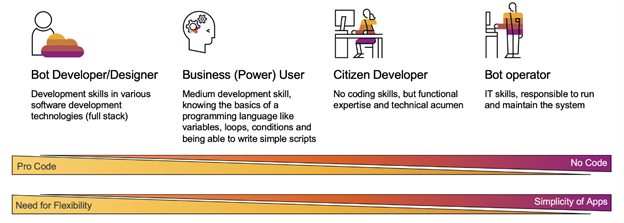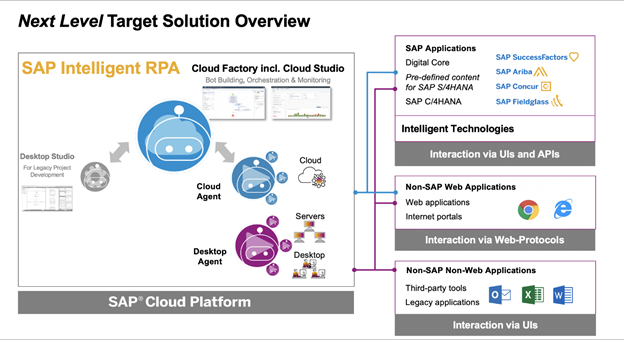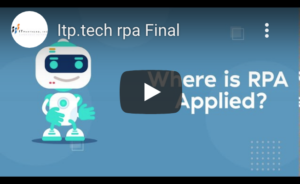 Anthony Cecchini is the President and CTO of Information Technology Partners (ITP), an ERP technology consulting company headquartered now in Virginia, with offices in Herndon. ITP offers comprehensive planning, resource allocation, implementation, upgrade, and training assistance to companies. Anthony has over 20 years of experience in SAP business process analysis and SAP systems integration. ITP is an Appian, Pegasystems, and UIPath Low-code and RPA Value Added Service Partner. You can reach him at [email protected].
Anthony Cecchini is the President and CTO of Information Technology Partners (ITP), an ERP technology consulting company headquartered now in Virginia, with offices in Herndon. ITP offers comprehensive planning, resource allocation, implementation, upgrade, and training assistance to companies. Anthony has over 20 years of experience in SAP business process analysis and SAP systems integration. ITP is an Appian, Pegasystems, and UIPath Low-code and RPA Value Added Service Partner. You can reach him at [email protected].
RPA became a buzzword in the enterprise field in 2015. That’s not to say some form of it didn’t exist before that. As early as the 1990’s Macro and screen-scraping technologies came into being. Later in the 2000’s RPA tools developed out of the need to focus on the automation of a limited set of repetitive tasks in an individual industry-specific solution. The SAP-acquired Contextor was one of those pioneers.
Today, RPA solutions deliver that promise: they automate from old mainframe applications to classic Windows applications as well as modern web-based applications. Direct API accesses as well as being able to invoke data access protocols like SQL are also more and more common in modern RPA tools. RPA started to merge with other technologies like Machine Learning, SAP and industry call this Intelligent RPA.
RPA is basically a software where bots handle the work that is routinely done by humans. The intelligent bots or robots by one of the leading software developers, SAP, are developed on the principles of artificial intelligence and machine learning. These bots will replicate human action and reduce or eliminate repetitive or manual tasks. They also deliver high-volume, error-free work at high speeds. In doing so, RPA improves your operational efficiency, accuracy, and productivity while reducing operational expenses by approximately 70%.
The business fields that are most influenced by RPA include the healthcare, telecommunications, banking, manufacturing, logistics, and supply chain sectors. Here, the software handles revenue forecasting, data validation, report generation, customer relationship management, and data replication, among other tasks.
With all the benefits it has to offer, RPA is clearly here for the long run. Even so, some companies are reluctant to adopt the software believing it will not effectively handle the technological changes guaranteed to happen in the future. They assume that the technology is only focused on a narrow list of repetitive tasks and will not prove cost-efficient for their operations. While other software companies might not be as intent on improving different things on their RPA platforms, SAP has invested in several things that will transform the future of RPA and ensure it holds up to the technological changes in the ERP world. The changes are also meant to boost the benefits of RPA to businesses.
Below are a few trends which are worthwhile to explore further…
The primary goal of RPA is operational efficiency, that is, making your company as time and cost-efficient as possible. Though revolutionary, RPA is not the only technology you need in a company to actualize efficiency. To reach end-to-end automation and maximize profits, it is best to combine RPA with other technologies. The typical tools combined with RPA are document information extraction ones like OCR. This is because most of the processes handled by RPA involve unstructured data like invoices, and it can be hard to enter this information into ERP systems. Moreover, RPA bots are generally short runners, whereas most business processes are long-running ones that need a few weeks to complete.
The combination of RPA with artificial intelligence and machine learning allows the training of complex business models to make decisions they would otherwise not have made with a rule framework. In the future, RPA can be plugged into machine learning to create a ‘’ decision engine’’. Alternatively, you will have the option of using a chatbot as your NLP interface to activate RPA bots in the background while executing an end user’s requests. The combination of RPA with application extension frameworks and integration middleware technologies, among other technologies, will help to bring an enterprise IT landscape under one platform.
Some of the combinations from SAP to handle unstructured documents with RPA under a harmonized business technology platform include:
- An in-built PDF reader to manage your system-generated PDF files.
- Third-party document processing frameworks that will support document-heavy workflows and case management.
- In-built text detector and OCR to extract information.
Low-code/now-code platforms (LCNC) are emerging platforms in the world of enterprise technology. With the many changes happening quickly in the IT world, there is a constant need for companies to hire the right talent to keep up. Allowing the extension or development of enterprise applications without having to develop code will minimize the expertise needed to keep up with technological changes. This will also allow the workers with limited expertise in your organization to handle the basic tasks of creating bots.

RPA can no longer ignore the LCNC platform. After all, the end-user is the best person to build an RPA bot because he/she understands the processes that are best automated. An LCNC RPA bot will minimize your costs of hiring new talent to write programming codes and fit well into a no-code/lightweight workflow tool. Here is a depiction of the different developers you might need for your RPA.
This of course also affects the complementary technologies to RPA, e.g. Pega where RPA platform will fit well to a lightweight/no code workflow tool.
Artificial intelligence (AI) and machine learning (ML) can become more than simple components of RPA bots handling structured and unstructured data. The technologies can become a part of the RPA bot itself. One good example of this is when leveraging computer vision technology to enhance the stability of surface automation. With this, you cannot integrate into the application protocol or user interfaces because the underlying application is inside a virtual desktop. As such, you have to remember the position of your pixel in relation to screen elements and the activities of input devices. Instead of doing this, you can train a CV model to identify screen elements then detect the right button to click, among other inputs in the future.
Building bots is easy but it can be further enhanced. Process mining that shows what processes to automate with RPA bots is already here. In the future, there will be user behavior mining that tracks user interfaces and generates the right data on the AI-assisted RPA bot building experience.
SAP Intelligent RPA will also allow the solution’s integration with other SAP products. The connectors for the typical SAP UI technology including UI5 and SAPGUI allow automatic and stable identification of the controls and elements in your system. There will also be connectors for other SAP UI technologies like type-script, Angular, React, Custom {AWB, SF}, and FIORIx.
In case you want to only automate web-based processes, you will not need to install a “Cloud Agent” for this in your local machine. You will have the freedom of using a desktop agent as well as a cloud agent to get a heterogeneous setting comprising web and native applications. The primary focus of cloud-based RPA is a simplification of bot design, effective automation, and an exceptional user experience. Some of the things that developers are aiming for with a cloud-based RPA include:
- Ease of capture of applications, controls, and pages along with their assembly to build automation.
- An ability to produce reusable automation then efficiently assemble them into end-to-end processes and automation.
- Getting visual programming capabilities that control complicated steps within business workflows.
- Building user interfaces, human-in-loop workflows, and low-code extensions for power users.
- The availability of tutorials and expert content based on processes and automation.
- A large number of pre-built skills and activities that allow native access to browser-based applications, scenario activities, application connectors, and MS-Office suite.
Here is a diagram of what SAP is aiming for with cloud-based RPA.

In the future, you can expect SAP Intelligent RPA to set up a schedule for execution by its bots, control the executions, and send you alerts in case per-defined events are triggered. To achieve this, SAP intends to enhance its run-time and cloud-based offering to improve its scalability and security. With the combination of security and enterprise-grade scalability using a control tower, here are some of the things you can expect from RPA to optimize your digital workforce:
- Configurable alerts to notify you of a failure in agent connectivity.
- A named queue for specific topics. At the moment, all job schedules are included in one queue in RPA software. Naming the queues will allow the separate monitoring of different aspects.
- Prioritization, sequencing, and dependency management within your queue for jobs. With this ability, you can choose which tasks you would like your software to handle first.
- The simplified registration of RPA agents for mass environment creation and single cases.
- A standardized and simplified user interface for publishing packages.
Summary
The above advancements mean that in a few years, RPA will not be a simple tool for automating your repetitive tasks. It will truly revolutionize the way most industries work. Below are the trends we discussed that we believe are impacting RPA today and in the near future.
- RPA to be a component that will always have its place and value in enterprise IT landscapes
- RPA being limited standalone, but as an integrated component it becomes an extremely powerful and stable business technology
- Low-Code/No-Code development experience is a must-have
- ML and AI really should be infused into RPA itself, and not only provide services in a bot’s workflow.





